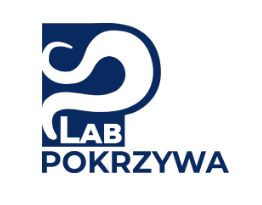Our research is centered on the dynamics of proteostasis, which involves the intricate equilibrium between protein synthesis and degradation. Our primary investigative focus is on the ubiquitin-proteasome system and the role of muscular exophers in maintaining proteostasis. Nonetheless, our curiosity extends beyond these areas, exploring a broader spectrum of topics related to protein homeostasis. To dissect these complex biological phenomena, we employ an integrated approach that combines biochemical assays, microscopy, molecular genetics, and bioinformatics analyses. Our studies are conducted using both mammalian cell models and the model organism Caenorhabditis elegans, leveraging their unique advantages to unravel the mechanisms underlying protein balance in cells.
OUR RESEARCH
In our laboratory, we broach the frontiers of cellular and molecular biology, focusing on the mechanisms of cellular adaptation to various stresses, protein homeostasis, and the nuanced roles of ubiquitination in health and disease. Our research spans several exciting areas:
Cellular adaptation to cold
We aim to unravel the complex mechanisms that regulate the abundance and types of cellular RNAs and proteins, critical for cellular survival decisions. Our investigation into protein quality control networks and the ubiquitin-proteasome system during C. elegans' recovery from cold stress is pioneering, shedding light on cellular resilience.
Regulation of lysine-deficient proteome through non-canonical ubiquitination
At the heart of our research is the ubiquitin-proteasome system, a crucial pathway for removing damaged and surplus proteins. Our work challenges traditional views by focusing on ubiquitination beyond lysine residues, offering insights into the proteasome's recognition and degradation processes. We are also excited about our development of the DEGRONOPEDIA web server (available at degronopedia.com), facilitating the in-depth exploration and prediction of degron motifs across various model organisms.
Exophers in proteostasis
Our findings on exophers, large extracellular vesicles, have revealed their unexpected role in nutrient delivery to embryos via muscle metabolism products. This discovery opened new avenues for understanding reproduction and offspring health, driving our current investigations into the molecular mechanisms of exophergenesis.
Nucleolar ubiquitination in ribosome biogenesis and stress protection
We have recently initiated research to understand how nucleolar ubiquitination influences the production of ribosomes and the stress response mechanisms in cancer cells. Our goal is to elucidate how nucleoli configurations contribute to cellular proteostasis and life-supporting functions.
Targeting proteinopathies
We aim to understand how mutations in key ubiquitin ligase receptorsimpair their ability to recognize and degrade proteins critical for neuronal function by defining its substrate spectrum and studying the mutations’ impact in disease-relevant models. We also seeks to establish strategies for designing small molecules that either restore normal interactions or redirect this ligases’ activity toward pathological targets, thereby paving the way for novel therapeutic approaches to correct disrupted protein homeostasis.
SCIENTIFIC IMPACT
CHIP and UFD-2 Ubiquitin Ligases Synergy
We demonstrated a highly processive ubiquitination system essential for regulating key enzymatic processes, impacting protein degradation strategies and potential breast cancer therapies. Our research was featured on the cover of the EMBO Journal in August 2022.
Unraveling FEM1C's Role in Neurological Diseases
We identified an ultra-rare mutation linked to a previously uncharacterized neurological condition, leveraging insights into its pathological mechanism through a C. elegans model harboring an analogous mutation to the one found in patients.
Exophers in Embryonic Support
We discovered the role of exophers, the largest class of extracellular vesicles, in delivering nutrients from muscles to embryos, challenging existing paradigms of proteostasis and offspring quality assurance. Our findings were highlighted on the cover of the EMBO Reports in August 2021.
FUTURE GOALS
Our laboratory aims to deepen our understanding of the ubiquitin-proteasome system's role in cellular stress responses, explore the novel functions of exophers in intercellular communication, and harness bioinformatics to uncover new degron motifs. Additionally, we are dedicated to the development of a C. elegans-based platform for modeling rare diseases, which will not only enhance our understanding of these conditions but also facilitate the discovery of targeted therapies.
COMMENT
"Our research efforts are dedicated to unraveling the complex molecular mechanisms of proteostasis and cellular adaptation, setting the stage for groundbreaking discoveries in biological science and new therapeutic strategies.” — Wojciech Pokrzywa, PhD, DSc Habil


